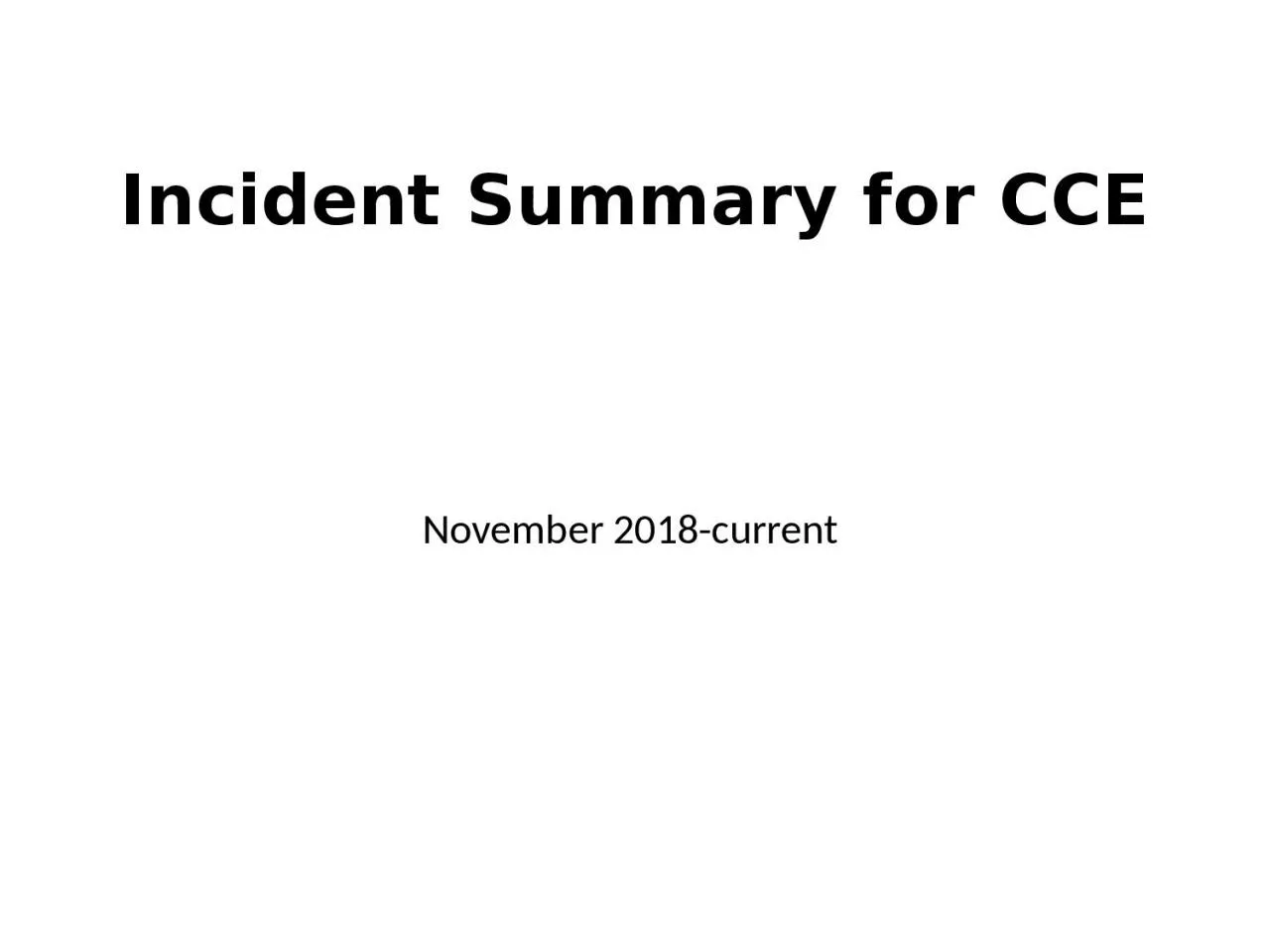

November 2018current Overview of Incidents Incident Type Total for Current Quarter Total for 2018 Academic Year Equipment related 2 2 Chemical Exposures 2 2 Chemical Spills 1 2 Injuries ID: 935303
Download Presentation The PPT/PDF document "Incident Summary for CCE" is the property of its rightful owner. Permission is granted to download and print the materials on this web site for personal, non-commercial use only, and to display it on your personal computer provided you do not modify the materials and that you retain all copyright notices contained in the materials. By downloading content from our website, you accept the terms of this agreement.
Slide1
Incident Summary for CCE
November 2018-current
Slide2Overview of Incidents
Incident Type
Total for
Current Quarter
Total for 2018 Academic YearEquipment related22Chemical Exposures22Chemical Spills12Injuries00Fires00
Current Quarter: 11/2018 to current
2018 Academic Year: 9/2018 to current
Slide3Equipment Related
Liquid nitrogen valve partially stuck open
:
After dispensing liquid nitrogen, valve was difficult to fully close so there was a small leak -Lab was eventually able to close valve
-A few of these occurred on the same day in different labs, right after raining. Humidity levels were very high -Can use heat gun on valve if leak is slow and no danger of asphyxiation or contact with leaking nitrogen. Call Safety for assistance -If leak is large, evacuate lab area and call x5000False alarm, phosphine: Phosphine alarm sounded, likely tripped due to construction dust. Building was evacuated -Phosphine not being used in lab, so alarm was shut off
Slide4Chemical Exposures
Potential inhalation of triethylamine
:
Graduate student felt dizzy after experiencing a ‘fishy’ smell coming from a shared rotovap. Student felt OK after getting fresh air.
-Shared rotovap had an issue with the vacuum system that caused a leak, issue was not communicated to other lab members -Lab members must communicate to others when shared equipment has issues. -Lab discussed posting signage if equipment is out of order Minor sulfuric acid exposure: a student was exposed to splattered material generated from a reaction of sucrose with sulfuric acid when they moved to the side of a blast shield. This resulted in minor burns. -Student’s inexperience coupled with the nature of this experiment may require additional controls to prevent exposure -Incident reporting and internal communication procedures are being evaluated and reinforced
Slide5Chemical Spill
Spill of acryloyl chloride:
Lab members experienced
lachrymating odor in the lab. Lab evacuated and found a cracked bottle of acryloyl chloride in a refrigerator had leaked. Lab secured area then called Security.
-Bottle cracked because this monomer polymerized, likely generating pressure and/or heat -Even though spill size was small (~50 mL) this was an emergency because respiratory protection was required to clean it (toxic vapor, lachrymator). Labs should not clean spills requiring a respirator -Bottle was not in secondary containment, causing spill to spread -Potentially sensitive monomers should be labeled with date of receipt to ensure old or potentially compromised bottles are disposed of (even with stabilizer)